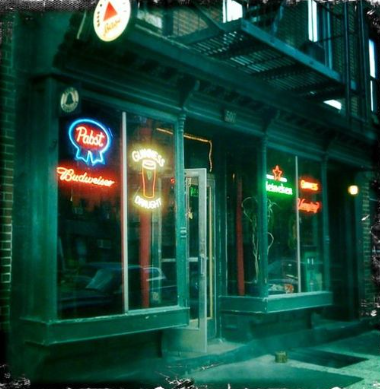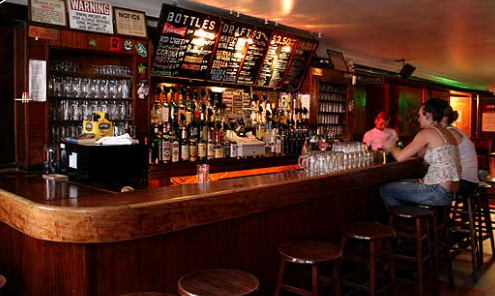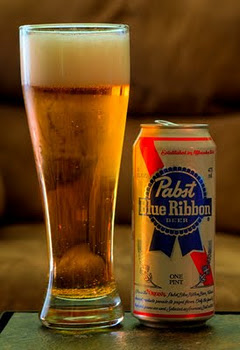Wednesday, August 31, 2022
Matt Dillon
Being Tony Bourdain Commemorative Art Gifts
Sunday, August 28, 2022
Old New York
The written history of New York City began with the first European explorer, the Italian Giovanni da Verrazzano in 1524. European settlement began with the Dutch in 1608.
The "Sons of Liberty" campaigned against British authority in New York City, and the Stamp Act Congress of representatives from throughout the Thirteen Colonies met in the city in 1765 to organize resistance to Crown policies. The city's strategic location and status as a major seaport made it the prime target for British seizure in 1776. General George Washington lost a series of battles from which he narrowly escaped (with the notable exception of the Battle of Harlem Heights, his first victory of the war), and the British Army occupied New York and made it their base on the continent until late 1783, attracting Loyalist refugees.
The city served as the national capital under the Articles of Confederation from 1785 to 1789, and briefly served as the new nation's capital in 1789–90 under the United States Constitution. Under the new government the city hosted the inauguration of George Washington as the first President of the United States, the drafting of the United States Bill of Rights, and the first Supreme Court of the United States. The opening of the Erie Canal gave excellent steamboat connections with upstate New York and the Great Lakes, along with coastal traffic to lower New England, making the city the preeminent port on the Atlantic Ocean. The arrival of rail connections to the north and west in the 1840s and 1850s strengthened its central role.
Beginning in the mid-19th century, waves of new immigrants arrived from Europe dramatically changing the composition of the city and serving as workers in the expanding industries. Modern New York traces its development to the consolidation of the five boroughs in 1898 and an economic and building boom following the Great Depression and World War II. Throughout its history, New York has served as a main port of entry for many immigrants, and its cultural and economic influence has made it one of the most important urban areas in the United States and the world. The economy in the 1700s was based on farming, local production, fur trading, and Atlantic jobs like ship building. In the 1700s New York was sometimes referred to as a breadbasket colony, because one of its major crops was wheat. New York Colony also exported other goods included iron ore as a raw material and as manufactured goods such as tools, plows, nails and kitchen items such as kettles, pans and pots.
Monday, August 22, 2022
Dive Bars of New York
.
Copyright 2008 Daniel Bellino Zwicke
DIVE BAR UPDATE - Summer 2022
PLACES To GET A $3.00 PBR in NEW YORK
.
SOPHIE'S
505 East 5th Street NY NY
On SOPHIE'S

BLUE & GOLD BAR
BLUE & GOLD BAR in the East Village, on East 7th Street between 1st and 2nd Avenues. Blue & Gold has long been a favorite of mine ever since I lived in the East Village from 1982 to 1994. It's just a cool ol normal old style bar with a pool table, standard 50's 60's Bar Decor, and Best-of-All $3.oo PBR'S and $6.00 Cocktails. I love it.

7B a.k.a. The Horseshoe Bar, also in the East Village, a bastion of cheap and fare prices in Manhattan and Land of The $3.00 PBR and other $3 and $4 Beers. 7B is located on the corner of Avenue B at 7th Street, hence the name "7B" ... The nickname Horseshoe Bar comes from the shape and dimensions of the bar, "Horseshoe Shaped." The bar has been the setting of numerous movie shoots, including the scene in Godfather II when Frankie Pantangeli (Frankie 5 Angels) goes to this bar for a meeting with the Rosato Brothers, and Danny Aiello raps a Piano-Wire around his neck.
A scene from the movie starring Paul Hogan as Crocodile Dundee and other movieswere shot here as well .... But Best of all, at 7B they serve $3.00 Beers, cheap drinks, and they have a photo and sell Potato Chips and Pretzels which practically no bars in Manhattan ever do any more. And this is a good thing when you get the munchies from the Beer. Glory Hallelujah, thank God for 7B ..
Lucy’s Bar is the most aptly named bar in New York. For Lucy—the quiet and small and sweetly proper Polish owner with the well-coifed gray hair and floral blouses—is who you’ll see when you go there, and Lucy is the one who will serve you. If there are other employees, they’ve hidden themselves somewhere in the back.
Though Lucy’s is undeniably a dive (and one of the last in the neighborhood), it feels more like your aunt’s aging rec room, a place where you’d never think of disrespecting the house’s hospitality. It’s also one of the last vestiges of the Polish community that was once made up a significant part of the East Village’s character.
Ludwika “Lucy” Mickevicius moved from Poland to New York in the late 1970s and soon got a job at Blanche’s, a bar on St. Mark’s Place run by another Polish woman. She became such a fixture that people began to think of the bar as Lucy’s, and, when Blanche retired, she sold the place—by then located on Avenue A—to her bartender.
Lucy’s life doesn’t range much further than the twin poles of her joint and Poland, which she visits regularly, shutting up the tavern at a moment’s notice and disappearing for weeks at a time. Most nights, she stations herself at the far end of the bar near the ancient cash register. (It’s cash only here.) One recent evening, the Halloween balloons hadn’t yet been taken down. Then again, assorted Thanksgiving and Christmas decorations were already out. Maybe none of the decorations are ever packed up?
Lucy doesn’t budge much behind the bar, but she keeps herself busy for a woman in her mid-70s. She will draw you a pint or a glass of tequila. And, if she likes you, she might pour you a shot of żubrówka, a Polish bison grass vodka, on the house. When the place gets stuffy, she’ll swing open the door to let some fresh Avenue A air in; just as quickly, she’ll close it if it gets chilly.
The clientele ranges from a less-intense sort of downtown hipster, who exchange a few friendly words with Lucy—who, even all these years later, still speaks in broken, accented English—and then retire to their personal conversations, to old Polish regulars. In fact, on another recent night, a young couple came in to show Lucy their young child. All four spoke entirely in Polish and a delighted Lucy let the little scamp climb atop the pool table. As they left, she handed the kid one of the old Halloween balloons. For those few minutes, Lucy’s was a family bar.



GOT ANY KAHLUA ?
The BIG LEBOWSKI COOKBOOK
Daniel Zwicke
Kramer n Tony
-
AL PACINO'S FAVORITE PASTA SPAGHETTI AGLIO OLIO RECIPE SPAGHETTI AGLIO OLIO alla GIORGIONE AL PACINO'S FAVORITE PASTA RECIPE is i...
-
Is OLD MUSIC KILLING NEW MUSIC ? "LET'S HOPE SO. NEW MUSIC SUCKS" !!! The BEATLES The following is an article by Ted Gioia...
-
HERSHEY BAR COST 1902 - 2 CENTS 1950 - 4 Cents, 1960 - 5 CENTS 1969 - 6 CENTS 1979 - 15 CENTS 1980 - 25 CENT...














































